Road rules for bicycle riders
A guide for anyone riding a bicycle in NSW. Know the rules, responsibilities, hand signals and how to share the road with pedestrians and other vehicles.
Road rules for bicycle riders
The information given in this section is a guide only and is subject to change at any time without notice.
Special rules for bicycle riders
You may:
- perform hook turns at intersections unless prohibited by a sign posting.
- You do not need to give a left or stop signal, or signal when making a hook turn.
- ride 2 abreast but not more than 1.5 metres apart
- overtake 2 other bicycle riders who are riding side-by-side
- ride in a Bus Lane, Transit Lane or Truck Lane but not in Tram Only and Bus Only Lane
- ride to the left of a continuous white edge line
- overtake on the left of stopped and slow moving vehicles.
Responsibilities for bicycle riders
Bicycle riders have a number of responsibilities when riding on and off the road.
Bicycle riders must:
- sit astride the rider's seat facing forward with at least one hand on the handlebars
- wear an approved bicycle helmet securely fitted and fastened on the rider's head
- keep to the left of any oncoming bicycle rider or pedestrian on a footpath, shared path, or separated path
- use the bicycle lane where available unless it is not practical to do so
- wait in the storage box area at traffic lights when available
- give way to any vehicle leaving a roundabout when the rider is in the left lane of a multi-lane roundabout and is turning right.
Bicycle riders must not:
- ride a bicycle without at least one working brake and fully functioning bell, horn, or similar warning device
- ride a bicycle at night or in hazardous weather conditions unless the bike displays:
- a flashing or steady white light visible for 200 metres from the front
- a flashing or steady red light visible for 200 metres from the rear, and
- a red reflector visible for at least 50 metres from the rear of the bicycle when light is projected onto it by another vehicle’s headlight on low beam
- carry a passenger who is not wearing a securely fitted and fastened helmet
- carry more people on a bike than it is designed for
- ride on a crossing except where there is a green bicycle light
- be towed by or hold onto another moving vehicle.
Riding in traffic
Bicycle riders must use a bicycle lane, if available, unless it’s impractical to use it. If there’s no bicycle lane, ride to the left of the road but avoid grates, debris and parked cars.
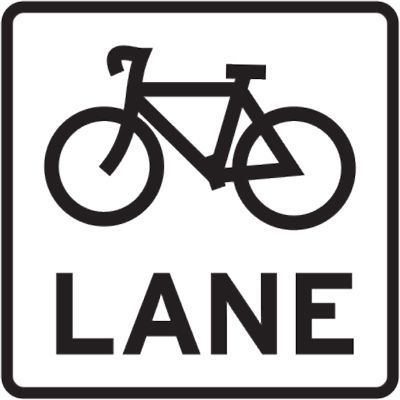
When riding in traffic you must stop:
- at red lights
- at stop signs
- at give way signs if there is traffic travelling on the crossroad
- when entering a roadway, especially from a driveway
- at a railway crossing when:
- there is a stop sign
- the crossing lights are flashing
- the boom gate is down
- a railway employee signals traffic to stop
- a train is coming.
Tramways are lanes on the road with tram tracks that include start and end signs and are generally marked on the let side by two continuous yellow lines running parallel to the tracks. They may also be marked on the left side by structures including bollards, dividing strips and separation kerbs.
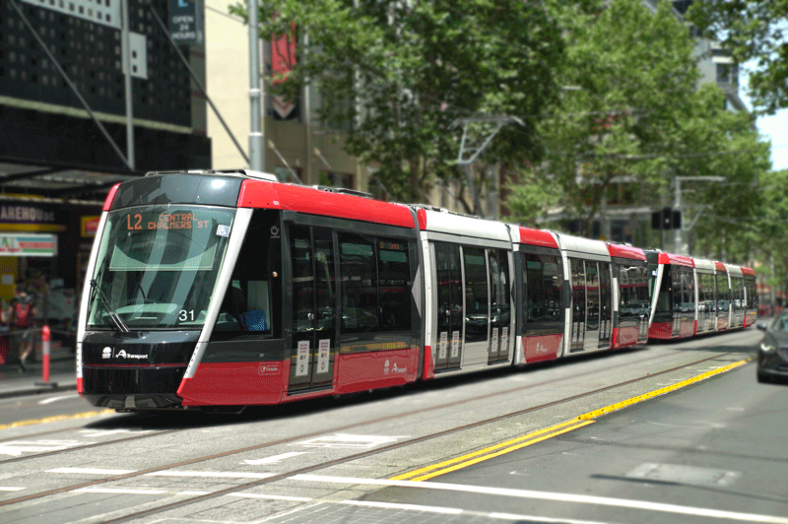
Only authorised vehicles are permitted to use tramways - bicycle riders are not permitted to ride along tramways.
Tramway and End Tramway signs
Bicycle riders who travel on a tramway will face a fine of $302.
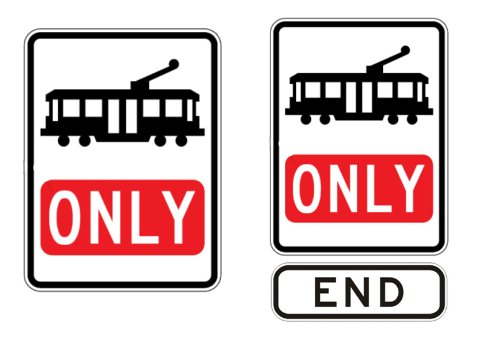
Hand signals
Hand signals help tell other road users what you are doing and where you are going.
You are required by law to give a hand signal when turning right or merging to the right lane.
Use hand signals about 30 metres before you turn, change lanes or change lane position.
Making a hand signal does not guarantee your safety. Always assess the actions of other road users around you to make sure it is safe before turning or changing lanes.
Riding on a pedestrian crossing
Bicycle riders must dismount and walk across pedestrian crossings except where bicycle crossing lights are installed.
At a red bicycle crossing light:
- you must stop before the crossing and only proceed if the bicycle crossing light changes to green or is not showing red.
At a green bicycle crossing light:
- you may proceed over the crossing area. In addition to bicycle crossing signals, you must obey any traffic signals or signs, as would other road users.

Bus lanes and bus only lanes
Bicycle riders can use bus lanes. However, you should be cautious of other vehicles using the lane, particularly when approaching intersections, as all vehicles can travel in a bus lane if they intend to turn left.
Bicycle riders are not permitted to use a lane when the words 'Buses Only' appear on a bus lane sign or lane markings.
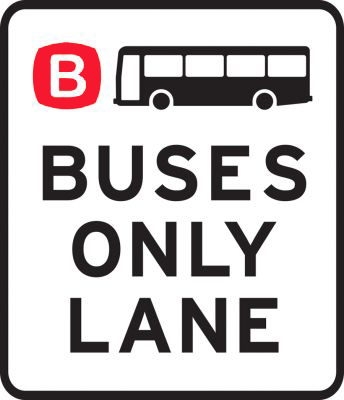
Shared paths and footpaths
Shared paths are paths designed for pedestrian and bicycle use. Shared paths are signposted and marked so you can tell if you are meant to share the path with pedestrians.
Speed
You should always adjust your speed to your environment. For example, sharing a path, you should ride at a speed that doesn't endanger yourself or those around you. Ride according to the path environment, your experience and skill level.
There are some shared paths with enforceable speed limits.
School zones and school buses
School zones are signposted and operate outside schools in the morning (8am through to 9.30am) and in the afternoon (2.30pm through to 4pm) during school term time.
There are also a small number of school zones that have different operating hours to suit the individual school.
As a road user, you are required to give way to children crossing the road at a pedestrian crossing. You should also follow the direction of a pedestrian crossing supervisor using the handheld stop/slow sign. Be wary of car doors opening and other potential hazards like children running across the road.
Buses can pose a hazard to bicycle riders. Buses may pull out at any time in front of you, so allow yourself plenty of clearance and move quickly.
You must give way to a bus that is attempting to merge into traffic in accordance with the law.
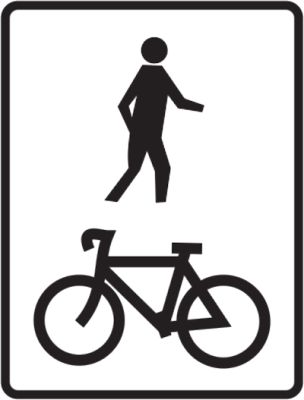
When riding on a shared path, you must keep to the left and give way to pedestrians.
You should also adjust your speed to suit the environment.
As a bicycle rider, you must overtake on the right-hand side.
Be particularly careful around young children, older pedestrians, and animals.
Riding on a footpath
Generally, bicycle riders must not ride on a footpath. However, children under the age of 16 years can ride on the footpath unless there is a NO BICYCLES sign.
Bicycle riders aged 16 years and over must not ride on a footpath unless they are:
- an adult supervising a child under the age of 16
- accompanying a child under the age of 16 where all children are under the supervision of an adult
- a postal worker riding a bicycle in the course of their work duties
- a rider carrying a child under 10 as a passenger
- a rider with a medical condition who is carrying a medical certificate that states a medical practitioner believes the rider should be allowed to ride on the footpath
- a rider accompanying a rider with a medical condition.
Sydney Harbour Bridge
A cyclist must not ride a bicycle on any part of the Sydney Harbour Bridge other than the cycleway.